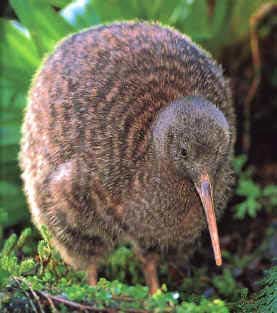 |
Kiwi Bird (Photo: kidzone.ws) |
The Kiwi bird is named after its distinctive “kiwi” call, and New Zealanders consider it a national symbol. They often proudly say, “I am a Kiwi,” meaning: I am a New Zealander.
In China, the Kiwi is referred to as the “Duyt da” (Apteryx) – it is the most primitive bird in the Apteryx family. The bird has a pear-like shape, covered with small fluffy feathers, and it has no wings or tail feathers. Although it cannot fly, it has strong, short legs and can run quickly at speeds of about 16 km/h. When provoked, it can kick another bird away up to 2.5 meters.
The Kiwi has a long, pointed beak, which serves as a third leg to stabilize its body while resting. Its nostrils are located at the tip of its beak, allowing it to have a unique sense of smell that can detect small worms buried up to 30 cm underground. Kiwis eat insects, worms, fruit, and young leaves. During the day, they hide in tree hollows, rock crevices, or burrows, and only venture out at night to forage for food. Their eyes are small, and their vision is poor; they often stumble over obstacles during the day.
Female Kiwis usually lay eggs only once every two years, with each clutch containing two eggs. Although they are roughly the size of a hen, their eggs are five times larger, weighing about a quarter to a third of the female’s body weight. If we consider the ratio of egg weight to body weight, it can be said that Kiwi eggs are the largest among all bird species.



















































